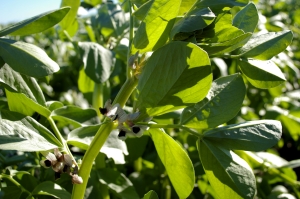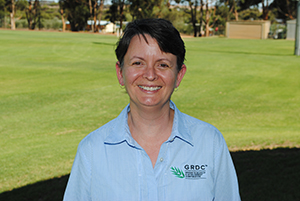New phosphorus research to set pulses racing
New phosphorus research to set pulses racing
Date: 07 May 2021

Phosphorus is the main fertiliser input required to successfully grow pulse crops, and local growers have expressed a desire for improved information to achieve the most profitable results when applying this nutrient.
A new Grains Research and Development Corporation (GRDC) investment aims to address this ‘knowledge gap’ by conducting field trials in Western Australia’s Albany and Esperance port zones.
Conducted by service provider Kalyx, the two-year project will investigate the response of field pea, faba bean and lentil crops to different phosphorus (P) treatments.
GRDC grower relations manager – west, Jo Wheeler, says P application guidelines for pulse crops in WA’s southern cropping areas are currently based on cereal crop P ‘response curves’ (predicted yield responses to applied P).

“GRDC Grower Network meetings have highlighted that these P response curves for cereals are used for pulse crops as there is perceived to be a lack of local data about P requirements in pulses in WA’s southern regions,” Ms Wheeler said.
“Previous research, nationally and internationally, has demonstrated a correlation between cereals and pulses and their P use efficiency (how much of the applied nutrient is used by the crop), but pulses appear to be less efficient in taking up P than cereals.
“The objective of the new investment is to validate – through field trials that include wheat as a control crop – the correlation of wheat P response curves with the P requirement of pulses.
“This is expected to lead to more accurate P fertiliser recommendations that will allow growers to grow pulses more profitably.
“This information is important as pulses are an important ‘break crop’ and can add diversity to crop rotations. Improving pulse agronomy knowledge may also increase grower confidence to grow more of these crops.”
Trial sites will be located at Kojonup in the Albany port zone and Grass Patch in the Esperance port zone – on soil types ‘responsive’ to the application of P.
Faba beans and field peas will be grown at the Kojonup site, and faba beans and lentils at the Grass Patch site.
To increase knowledge on current pulse nutrition practices and to help guide the research, Albany and Esperance port zone growers encouraged to complete a short survey being conducted by Kalyx.
For Interviews
Jo Wheeler, GRDC Grower Relations Manager – West
0438 292 167
jo.wheeler@grdc.com.au
Contact
media@grdc.com.au – West
0427 189 827
media@grdc.com.au
GRDC Project Code: KAL2104-001SAX,
